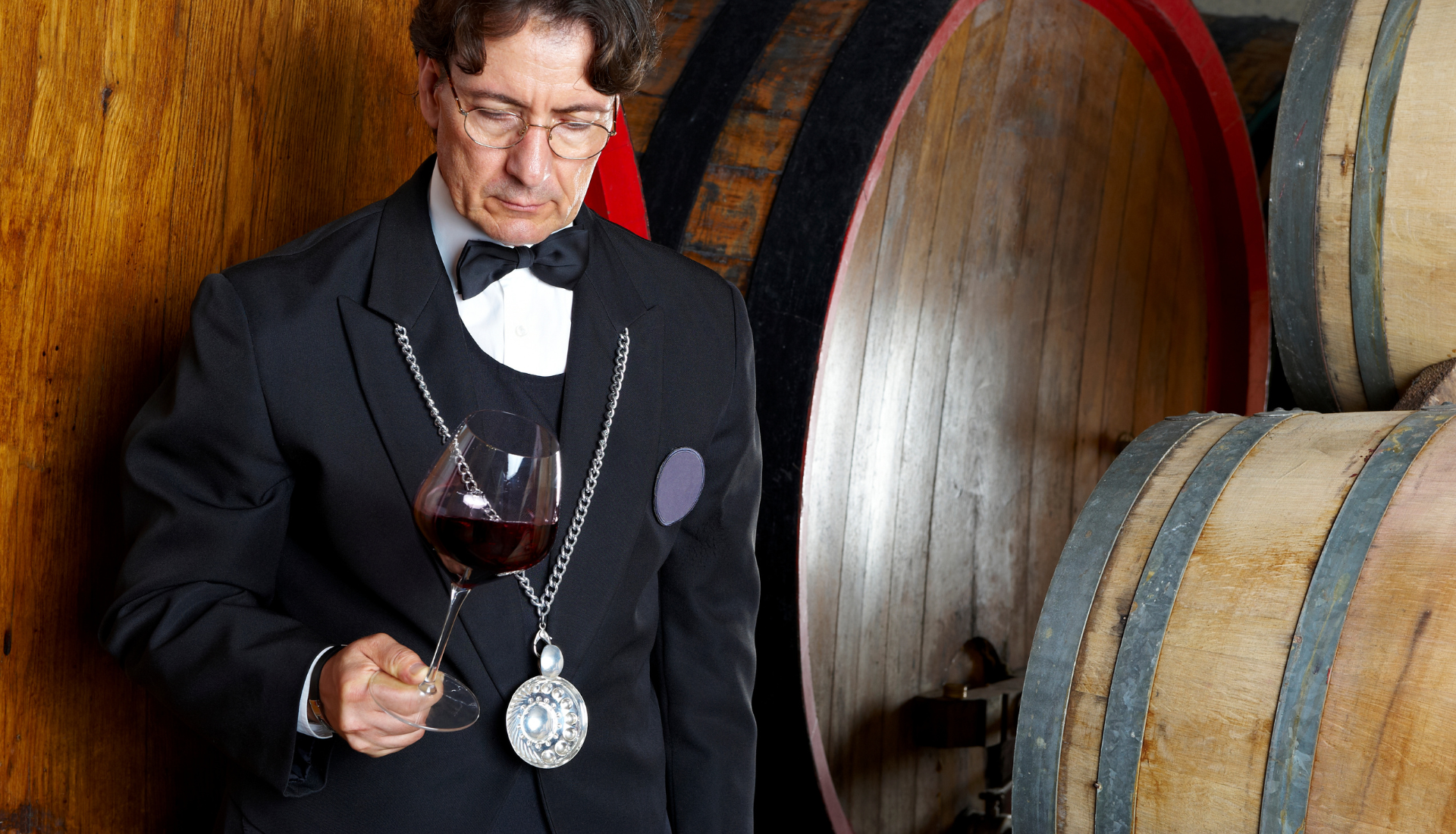The Tastevin Cup: A Valuable Tool of the Sommelier's Profession
The sommelier profession is delicate and intricate. Properly assessing the flavor and aroma of wines requires years of study and experience.
Therefore, one of the essential tools at a sommelier's disposal is the tastevin. Sommeliers have used this small, delicate cup to taste wine precisely and accurately for centuries.
However, the tastevin's accurate and elegant design is not an end in itself but serves a specific function: allowing sommeliers to taste wine in complete darkness.
The word "tastevin" comes from French and means "tasting cup" or "tasting saucer." A Tastevin Cup is a small, shallow silver or pewter cup with a shiny surface. It is traditionally used by wine professionals, like sommeliers, to taste and evaluate wine. Tasters can look at the color and clarity of the wine through the cup's shiny surface, and the shape and size of the cup make it easy to swirl the wne to release its scent.
How to Pronounce Tastevin
The tastevin is traditionally made of silver. It is small, round, and has a shallow bowl with a handle.
History of Tastevin?
The tastevin has a long history dating back to the 17th century in the Burgundy region of France. It was originally used by wine merchants and producers to evaluate the quality of their wines.
The tastevin is a tiny silver cup or saucer used for centuries in wine production and appreciation.
The flat cup, which was initially used to determine wine's color, clarity, and maturity in the third century before the common era, is still utilized today. Therefore, this little gadget is usually considered for display.
It is not an uncommon gift for sommeliers, wine enthusiasts, or anyone who works with wine. Of course, the taste can have different meanings to different people, but the sommelier will always hold it close to their hearts.
What is the Tastevin cup used for?
The tastevin is valued for its small size and shape, which allow for a concentrated sniff and taste of the wine, helping the sommelier to better evaluate its quality and characteristics.
The cup's material, silver or brass, also reflects the wine's color, allowing for more accurate assessments of its appearance.
A taster is an essential tool for sommeliers because it allows them to properly assess all aspects of a wine's flavor profile without being influenced by its color.
How to Use a Tastevin Cup: Step-by-Step Guide
Here’s a step-by-step guide to using a Tastevin cup:
Step 1: Gather Your Tools
Tastevin cup: A shallow, broad cup with a slightly convex bottom and raised edges.
Wine bottle: The wine you want to taste.
White background: A white napkin or a piece of paper to help you see the wine's color and clarity clearly.
Step 2: Pour the Wine
Open the wine bottle: Use a corkscrew to remove the cork carefully.
Pour a small amount of wine into the Tastevin cup: About 15-30ml (one to two tablespoons) is enough.
Step 3: Observe the Wine
Hold the Tastevin cup at an angle: Tilt it slightly to allow the wine to spread out across the bottom of the cup.
Check the clarity: Look through the wine to see if it is clear or has any particles.
Assess the color: Hold the Tastevin cup against a white background. Observe the hue and intensity of the color, which can give you an idea about the wine's age and grape variety.
Step 4: Swirl the Wine
Gently swirl the wine in the Tastevin cup: This helps to release the wine's aromas.
Observe the legs (tears): The streaks on the cup's side when the wine settles can indicate alcohol content and viscosity.
Step 5: Smell the Wine
Bring the Tastevin cup close to your nose: Take a deep sniff to capture the wine's aromas.
Note the aromas: Identify fruit, floral, spice, or earthy scents. This can give you clues about the wine’s character and complexity.
Step 6: Taste the Wine
Take a small sip: Allow the wine to coat your palate.
Analyze the flavors: Note the initial flavors, mid-palate, and finish. Pay attention to the balance of acidity, tannins, sweetness, and body.
Spit or swallow: If you are tasting multiple wines, it's a good idea to spit to avoid intoxication.
Step 7: Record Your Impressions
Make notes: Jot down your observations about the wine's appearance, aroma, taste, and overall impression. This can be useful for comparing wines and improving your tasting skills.
Tips for Using a Tastevin Cup
Practice in different lighting conditions: The Tastevin cup is designed to reflect light and help assess wine in low-light conditions. Practicing in various environments can improve your skills.
Clean the cup between tastings: Rinse the Tastevin cup with water and dry it thoroughly to avoid cross-contamination between different wines.
Understand the limitations: While a Tastevin cup is traditional and useful, modern wine glasses are often better for fully experiencing a wine's aroma and flavor.
By following these steps, you can effectively use a Tastevin cup to enhance your wine tasting experience, whether you're in a dimly lit cellar or a well-lit tasting room.
Is the Tastevin Necessary for Sommeliers?
While it may not be strictly necessary, the tastevin remains a valuable tool for many sommeliers in the hospitality industry.
Its unique features and rich history make it a standout tool in the sommelier's toolkit."
Tastevin for sale
The Tastevin is available for sale online and in some kitchen stores. It is not a standard kitchen tool but can be a fun addition for those who enjoy wine tasting.
The sommelier will always have one on hand, ready to use at a moment's notice.




